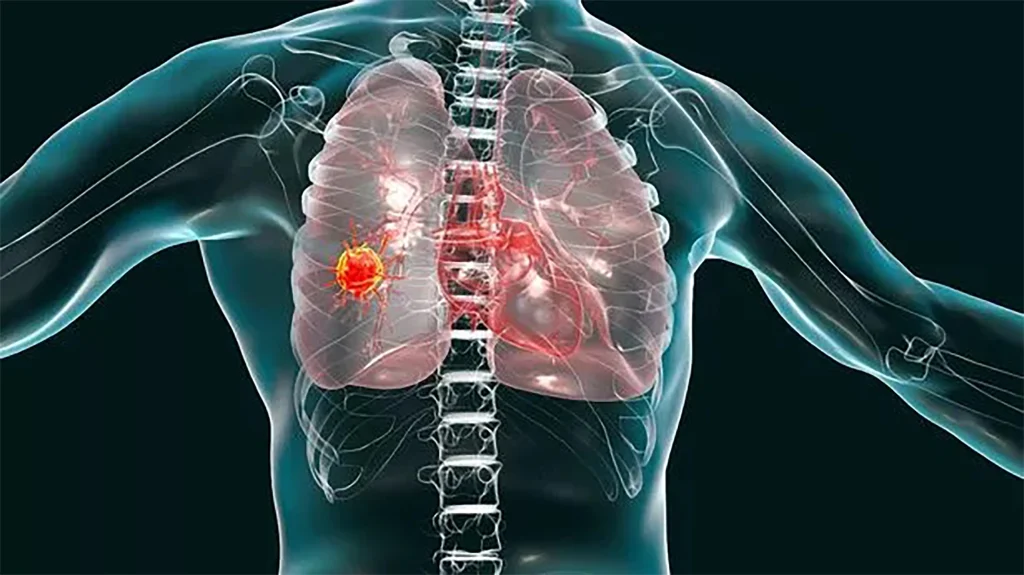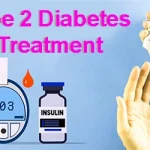How can I detect cancer early?
How can I detect cancer early? Cancer is a disease where abnormal cells grow uncontrollably, invading and damaging surrounding tissues and potentially spreading to other parts of the body. This abnormal cell growth is usually triggered by genetic mutations or damage to DNA that disrupts normal cell regulation.
In healthy cells, growth, division, and death are carefully controlled, but cancer cells avoid these controls, allowing them to multiply unchecked.
What is cancer?
Cancer is a malignant disease in which abnormal cells grow uncontrollably, invade surrounding tissues and cause fatal damage to the body. There are many types of cancer, each named based on the location or cell type it affects, such as breast cancer, lung cancer, or leukemia (cancer of the blood).
Factors like genetics, lifestyle, environmental exposures, and certain infections can all increase the risk of cancer. The approach to treating cancer often includes a combination of surgery, radiation, chemotherapy, immunotherapy, and targeted therapies, depending on the type and stage of the disease.
What is silent cancer?
“Silent cancer” refers to types of cancer that show few or no symptoms in their early stages, making them difficult to detect until they’ve advanced. Cancers commonly considered “silent” include pancreatic cancer, ovarian cancer, kidney cancer, and liver cancer.
These cancers often grow and spread without causing obvious signs, which can lead to a delay in diagnosis and make treatment more challenging. Early detection of these cancers typically relies on regular screenings, imaging tests, and awareness of subtle changes in the body.
How can I detect cancer early?
Detecting cancer early improves the chances of successful treatment. Here are some steps and strategies that can help with early detection:
1. Screening Tests: Regular screenings can help identify cancer at an early stage before symptoms appear. Common screenings include:
- Mammograms for breast cancer
- Pap smears and HPV testing for cervical cancer
- Colonoscopy for colon cancer
- Low-dose CT scans for lung cancer (especially for smokers)
- Prostate-specific antigen (PSA) tests for prostate cancer in certain age groups
2. Know Your Family History: Some cancers have a genetic component. If you have a family history of certain cancers (breast, ovarian, or colorectal cancer), discuss genetic testing or more frequent screening with a healthcare provider.
3. Pay Attention to Unusual Symptoms: While many cancers are “silent” in their early stages, some subtle symptoms may be noticeable, such as:
- Unexplained weight loss
- Persistent fatigue
- Changes in skin (such as new moles or changes to existing moles)
- Unusual bleeding or discharge
- Persistent pain or discomfort
4. Self-Exams: For certain cancers, self-exams can be helpful:
- Breast self-exams can help detect unusual lumps
- Skin self-exams can identify changes in moles or skin patches
- Testicular self-exams can help detect testicular cancer early
5. Healthy Lifestyle Choices: A balanced diet, regular exercise, avoiding tobacco, and limiting alcohol can reduce cancer risk and promote overall health. Additionally, staying protected from excessive sun exposure reduces the risk of skin cancer.
6. Regular Medical Checkups: Routine checkups allow healthcare providers to monitor health changes over time and can be an opportunity to discuss any new symptoms or concerns.
If you have any concerns or symptoms that persist, consult with a healthcare provider. Early detection and proactive health management are key to catching cancer early and improving treatment outcomes.
How can I get my body checked for cancer?
Getting your body checked for cancer typically involves a combination of screenings, tests, and consultations with healthcare professionals. Here’s a guide on how to approach a comprehensive cancer check:

1. Schedule a Routine Physical Exam: Start with a general checkup from your primary healthcare provider. They can assess your overall health, review your family history, and guide you on specific screenings based on your age, gender, and risk factors.
2. Discuss Cancer Screenings:
Based on risk factors, your doctor may recommend certain routine screenings, such as:
- Breast Cancer: Mammograms, typically recommended every 1-2 years for women starting at age 40-50, or earlier if there’s a family history.
- Cervical Cancer: Pap smears and HPV testing, recommended every 3-5 years for women starting in their 20s.
- Colorectal Cancer: Colonoscopies, recommended every 10 years starting at age 45-50 for average risk, or earlier for those with family history.
- Prostate Cancer: PSA testing, typically recommended for men over 50 or earlier with family history.
- Lung Cancer: Low-dose CT scans, recommended for people over 50 with a history of smoking.
3. Request Blood Tests: Blood tests can sometimes reveal markers that may indicate cancer, such as:
- Complete Blood Count (CBC): Helps detect blood cancers like leukemia.
- Tumor Markers: Specific markers (like CA-125 for ovarian cancer, CEA for colon cancer, and PSA for prostate cancer) may indicate certain cancers, although these tests are not typically used alone for diagnosis.
4. Consider Advanced Imaging Scans:
CT, MRI, or PET Scans: Useful for detecting abnormal growths in internal organs if there are symptoms or higher risk factors. These tests are generally only ordered if there’s a reason to suspect cancer.
Ultrasound: Often used to look at tissues that can’t be felt during a physical exam, like the thyroid or ovaries.
5. Genetic Testing: If there’s a strong family history of cancers (such as breast, ovarian, or colon cancer), genetic testing can identify mutations that might increase your cancer risk (BRCA1/2 for breast cancer). Discuss this option with your doctor if you have family history concerns.
6. Whole-Body Scans: Whole-body MRI or CT scans are sometimes marketed as cancer screenings, but they aren’t typically recommended unless specifically indicated, as they can lead to false positives or unnecessary procedures.
7. Stay Alert for Symptoms: Monitor for any unusual signs such as unexplained weight loss, persistent fatigue, lumps, pain, or changes in skin and body functions, and see a doctor if these arise.
8. Stay Up-to-Date with Vaccinations: Some vaccines, like the HPV vaccine and hepatitis B vaccine, help prevent cancers linked to infections (cervical and liver cancer, respectively).
These steps help ensure comprehensive monitoring and prompt attention if any suspicious signs arise. If you have a specific area of concern, your healthcare provider can guide you on targeted testing for peace of mind.
Cancer Treatment Guidelines
Cancer treatment guidelines are designed to provide evidence-based recommendations for treating different types and stages of cancer. Here’s an overview of the general approaches based on cancer type, stage, and patient health:
- Determining the Treatment Plan
- Cancer Type and Stage: The treatment plan depends heavily on the type and stage of cancer (early-stage vs. metastatic).
- Overall Health and Age: Age, existing medical conditions, and personal health goals are considered.
- Molecular and Genetic Testing: Some cancers are tested for specific mutations or biomarkers, which can guide targeted therapies.
- Common Cancer Treatment Modalities
- Surgery: Often the first step if cancer is localized, surgery aims to remove the tumor and surrounding tissue. It may also be used to reduce the tumor size before other treatments.
- Radiation Therapy: High-energy rays are used to kill or shrink cancer cells. This treatment can be curative or palliative, especially if surgery isn’t an option. Techniques include external beam radiation and internal radiation (brachytherapy).
- Chemotherapy: Uses drugs to kill fast-growing cancer cells throughout the body. Often used when cancer has spread, it can be used alone or alongside other treatments to shrink tumors or prevent recurrence.
- Immunotherapy: Activates the body’s immune system to recognize and fight cancer cells. Used particularly for cancers like melanoma, lung cancer, and some blood cancers.
- Targeted Therapy: Drugs designed to target specific genes, proteins, or enzymes that promote cancer growth, such as HER2-targeted drugs in breast cancer.
- Hormone Therapy: Used for cancers that are sensitive to hormones, like breast and prostate cancer. This therapy blocks hormones that fuel tumor growth.
- Stem Cell or Bone Marrow Transplant: Often used in blood cancers (leukemia or lymphoma), a transplant replaces damaged or destroyed bone marrow with healthy cells.
- Guidelines for Common Cancers
Each cancer type has specific guidelines. Here are some of the general recommendations for commonly treated cancers:
Breast Cancer: Often treated with a combination of surgery, radiation, chemotherapy, hormone therapy, and/or targeted therapy based on hormone receptor and HER2 status.
Colorectal Cancer: Early-stage colorectal cancer may be treated with surgery alone. For more advanced stages, chemotherapy, targeted therapy, and radiation may be included.
Lung Cancer: Treatments can include surgery, chemotherapy, radiation, immunotherapy, and targeted therapies, depending on the type (e.g., non-small cell or small cell) and stage.
Prostate Cancer: Often managed with active surveillance for early stages. Surgery, radiation, hormone therapy, and, in some cases, chemotherapy are used depending on progression.
Blood Cancers (Leukemia, Lymphoma): Chemotherapy and stem cell transplants are common, along with targeted therapies and immunotherapies, depending on the type and severity.
- Follow-Up and Monitoring
Regular Monitoring: After initial treatment, regular follow-ups (scans, blood tests, or physical exams) are essential to monitor for recurrence.
Supportive and Palliative Care: Aimed at managing side effects and improving quality of life during and after treatment.
- Accessing Treatment Guidelines
Organizations like the National Comprehensive Cancer Network (NCCN) and the American Society of Clinical Oncology (ASCO) publish updated guidelines that are specific to each cancer type and include new therapies, side effect management, and patient support resources.
Your healthcare provider will tailor treatment to fit your specific diagnosis, health condition, and treatment goals. You will be assured of the kind of treatment that will help you get well.
Conclusion
How can I detect cancer early? What kind of disease is cancer and how can you treat it, we have presented here various guidelines along with the symptoms. Hope you can understand by reading this article. We have other posts on such important topics. Don’t forget to visit regularly to get more new content like this. Be sure to share our web address with your friends.





